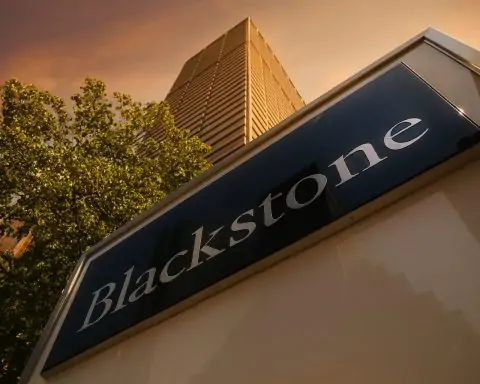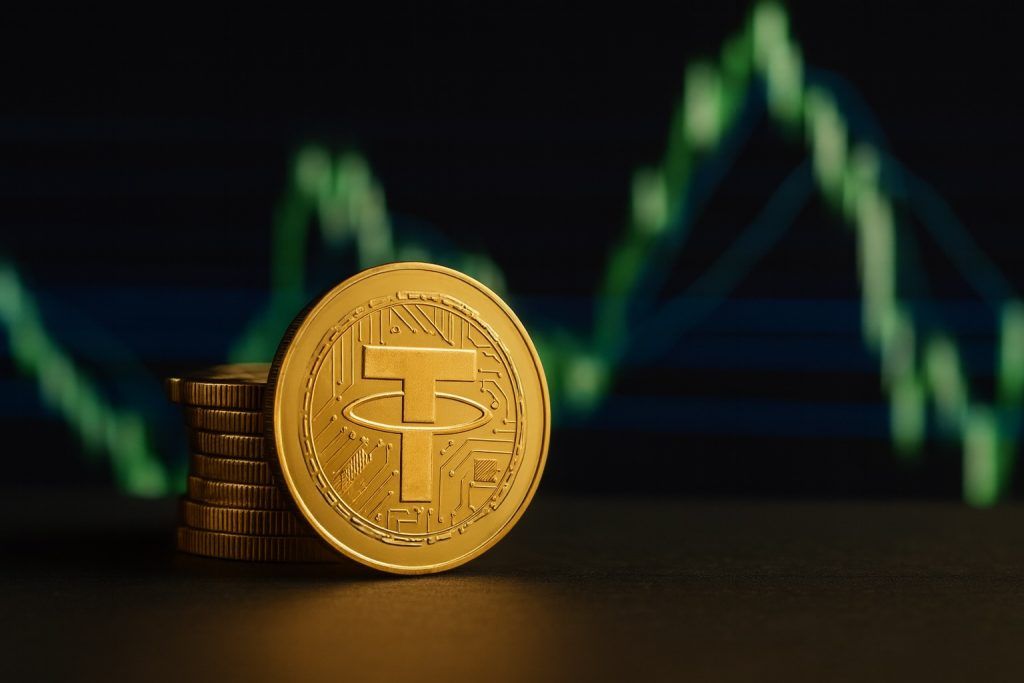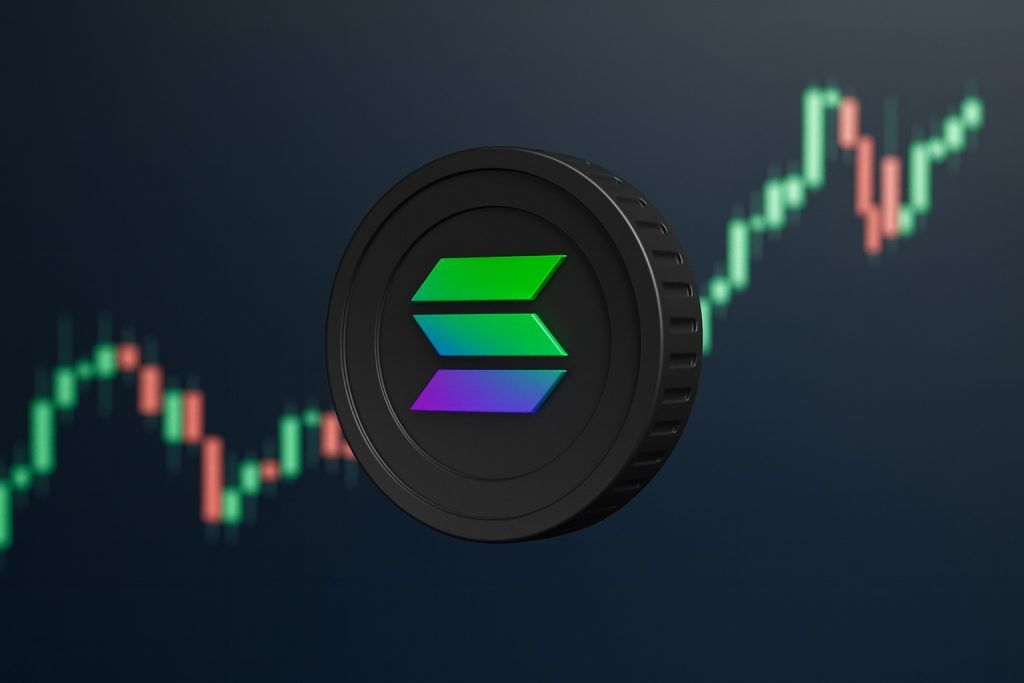- AVAX holds the $30 level in early October 2025, rebounding from a late-September dip (~$27) with a market cap near $12–13 billion and ~$700M in daily trading volume [1] [2]. The token spiked to ~$31.3 after fresh institutional investment news before cooling off [3].
- Major institutional moves fuel optimism: Avalanche Treasury Co. announced a $675M SPAC deal to buy $1 billion of AVAX, aiming to give institutions more than “passive exposure” to Avalanche [4]. Separately, a Nasdaq-listed firm (AVAX One) is raising $550–700M to acquire AVAX [5], signaling rising big-money interest despite recent price volatility.
- Ecosystem on the rise: Avalanche’s on-chain activity is booming – DEX volumes hit $17.4B in September, a near 3-year high [6]. Analysts note daily transactions jumped 46% last quarter, with stablecoin transfers surging 421% as new DeFi apps and subnets drive usage [7]. Big partnerships (e.g. Mirae Asset, PayPal USD stablecoin integration, and a Wyoming state stablecoin) highlight expanding real-world adoption [8] [9].
- Technological momentum: In 2025 Avalanche rolled out the Octane upgrade (ACP-176) to slash fees and boost throughput on its C-Chain [10]. The network’s 2025 roadmap (“Etna” upgrade) focuses on scalability (higher TPS, faster consensus) and an Avalanche 9000 campaign to attract developers [11] [12]. Avalanche’s unique subnet architecture enables custom blockchains for enterprises and gaming, positioning it as a flexible “multi-chain” Layer-1 rival to Cosmos and Polkadot.
- Staking and network health: Approximately 1,200 validators now secure Avalanche’s proof-of-stake network [13]. About 40% of AVAX supply (180+ million tokens) is staked, yielding ~6–8% APY to validators and delegators [14] [15]. The Octane upgrade helped cut average transaction fees ~43%, spurring a 5× quarter-over-quarter spike in transactions by mid-2025 [16] [17]. Active addresses have also climbed (~46k daily users in August, +57% MoM) as Avalanche’s uptime and low latency attract more activity [18] [19].
- Competitive landscape: Avalanche is often compared to Ethereum, Solana, and Cosmos. Like Ethereum, it’s EVM-compatible and hosts many DeFi dApps, but Avalanche touts sub-second finality and much lower fees [20] [21]. Versus Solana’s ultra-fast but more centralized approach, Avalanche prioritizes decentralization (lower hardware requirements, ~1k+ validators) and hasn’t suffered major outages – though Solana leads in raw TPS and active users. Meanwhile, Avalanche’s “subnet” model rivals Cosmos’ app-chains: subnets let projects launch bespoke blockchains using Avalanche’s security, whereas Cosmos zones are independent (tied by IBC). Recent data even showed Avalanche’s DeFi activity rivaling larger chains (e.g. BNB Chain and Solana saw competition in active addresses and DEX volumes) [22] [23].
- Latest developments & partnerships: The Avalanche Foundation is actively courting real-world assets and institutions. Tokenization initiatives are in motion – e.g. asset manager VanEck launched a tokenized U.S. Treasury fund (VBILL) across Avalanche and others [24], and SkyBridge Capital is tokenizing $300M of fund assets on Avalanche [25]. In South Korea, Avalanche partnered with financial giants like Mirae Asset on fund tokenization and helped launch a KRW-backed stablecoin (KRW1) with Woori Bank [26] [27]. Even sports and culture are embracing Avalanche: a recent deal will use an Avalanche subnet for digital ticketing at the Copa América de Béisbol 2025, showcasing the network’s NFT and fan engagement potential.
- Market outlook for Q4 2025–Q1 2026: Sentiment around AVAX is cautiously bullish heading into late 2025. Crypto analysts at BTG Pactual’s Mynt noted Avalanche’s “sharp growth in on-chain activity” and included AVAX among their top picks for an expected Q4 crypto rally [28]. Technical analysts also see promising signs: AVAX successfully retested its ~$27 support zone, which “reinforced bullish conviction” and set up potential targets at $45–$55 if momentum continues [29] [30]. A recent Brave New Coin report highlighted strengthening fundamentals – Avalanche logged $2.2B in DEX volume over three days during a late-September surge [31], and the planned $1B AVAX purchase by Avalanche Treasury Co. is a “strong signal” of long-term confidence, potentially reducing circulating supply [32]. On the other hand, more conservative forecasts see AVAX staying mostly range-bound (e.g. ~$25–$32) through year-end amid broader market uncertainty [33]. Overall market conditions will be pivotal: if Bitcoin and majors continue their “Uptober” uptrend, AVAX could ride that wave higher, whereas any regulatory setbacks or risk-off turn might cap its gains.
AVAX Price Action in Early October 2025
Avalanche’s native token AVAX is trading around $30 as of October 5, 2025, steadying after a volatile September. The token spent the past week consolidating near this level, with a circulating market capitalization roughly in the $12–13 billion range [34]. 24-hour trading volumes have averaged between $650 million and $800 million, reflecting healthy liquidity [35]. This stability comes after AVAX bounced off a key support around $27–28 in late September – a level that marked an 18% weekly slide amid a broader crypto pullback [36]. That dip saw AVAX drop from the low-$30s to the high-$20s alongside declines in ETH, SOL, and other majors [37].
Notably, AVAX rebounded sharply into the first days of October, coinciding with major Avalanche ecosystem news. On October 2, the token’s price spiked to an intraday high of about $31.32 after Avalanche announced a landmark $1B token purchase plan (details below). It closed that day up ~2.3% despite cooling off from the peak [38]. This indicates that positive fundamentals are starting to be priced in – a change from September, when even bullish announcements failed to immediately lift AVAX’s price [39] [40]. Over the last month, AVAX is actually up ~22% (it traded in the ~$24 range in late August) [41], outpacing many peers. Year-to-date, however, the coin remains well off its 2023 highs, reflecting the long road from its all-time high of $128 (Nov 2021) down to current levels.
Market technicians point out that $30 has become a pivot level: CoinDesk Analytics noted AVAX struggled to break above ~$30.28 resistance in September, but also found “weak support” around $27.65 [42]. The recent hold of $27 support has been encouraging. Crypto chartists now view $27 as a solid floor – AVAX saw a “clean retest” of that zone which has “set the stage” for a renewed push higher [43] [44]. If the token can close above the low-$30s, the next technical targets are cited around $40–$45 (levels unseen since mid-2022). Conversely, a break below ~$27 would be a bearish signal, potentially reopening mid-$20s or lower. For now, momentum favors the bulls, as AVAX is making higher lows on the chart and holding its 3-month uptrend line [45]. Traders are watching the $33–35 zone (recent highs in mid-September) as a short-term hurdle; a move past that range on strong volume could ignite a more rapid rally.
On the market capitalization front, Avalanche ranks roughly #14 among cryptocurrencies (just outside the top-10 club of layer-1s). Its circulating supply is about 422 million AVAX [46], out of a maximum 720 million – meaning ~59% of the max supply is issued [47]. At $30 per coin, that math yields a ~$12.7B circulating market cap (and a fully diluted valuation around $21.6B if max supply is considered). By comparison, Ethereum’s market cap is ~$300B and Solana’s is around $90B as of early October [48]. This underscores that Avalanche, while significant, is still an order of magnitude smaller than the top two smart contract platforms and has room to grow if it can capture more market share.
Trading volumes reflect Avalanche’s position as a mid-to-upper tier crypto asset. On peak news days (like Oct 2–3), AVAX’s 24h volume topped $740M on major exchanges [49]. Normal days see $400–600M, which is decent but below giants like ETH. One interesting metric: on-chain DEX volume (within Avalanche’s DeFi ecosystem) has surged recently – indicating more AVAX activity is happening natively, not just on centralized exchanges. In September, Avalanche’s on-chain DEX trading volume reached $17.4 billion, the highest monthly total in nearly three years [50]. This explosion of on-chain volume (detailed later) suggests growing usage of AVAX within its own network, a positive sign for organic demand.
In summary, AVAX’s price action in early Q4 2025 shows resilience. The token weathered a broader market dip, held a critical support, and is now grinding upward, aided by bullish news. With price hovering around $30 – roughly the midpoint of its 2023 range – Avalanche has set the stage for either a breakout towards higher levels if catalysts continue, or a possible retest of support if macro sentiment turns. The next sections explore whether Avalanche’s fundamentals and recent developments justify the market’s cautious optimism.
Big News and Ecosystem Updates (DeFi, NFTs, Partnerships, Regulation)
The past several days have brought major news for the Avalanche ecosystem, particularly involving institutional capital and ecosystem growth. These developments are not only moving AVAX’s price, but also expanding Avalanche’s reach in decentralized finance (DeFi), NFTs, and real-world use cases. Below we recap the most significant recent updates:
- $1 Billion Avalanche Treasury Co. SPAC: In a headline-grabbing move, a newly formed company called Avalanche Treasury Co. (ticker to be “AVAT”) announced plans to go public via a $675 million SPAC merger and purchase over $1 billion worth of AVAX tokens [51] [52]. The deal, unveiled on Oct. 2, involves Avalanche Treasury Co. merging with Mountain Lake Acquisition Corp (a blank-check firm) and aiming to list on Nasdaq by Q1 2026 [53]. The company will effectively become a massive AVAX holding vehicle – the “largest public vehicle for institutional AVAX exposure”, as it brands itself [54]. Notably, Emin Gün Sirer, founder of Ava Labs (Avalanche’s developer), will join as an advisor [55], and Bart Smith – former head of Susquehanna’s crypto division – has been named CEO [56]. Avalanche Treasury Co. claims an “exclusive relationship” with the Avalanche Foundation to buy tokens at a discount [57], and plans to actively participate in the network (running validators, investing in Avalanche projects, facilitating tokenization of assets) rather than simply hodling [58]. This SPAC-driven treasury strategy mirrors an earlier initiative (see AVAX One below) and is seen as a novel way to bring institutional money into a layer-1 ecosystem. Bart Smith emphasized the goal is to offer institutions “more valuable than passive exposure” to Avalanche by driving on-chain yield and integration [59]. The announcement immediately boosted market sentiment – AVAX’s price jumped ~5%+ on the day [60] – as traders bet that over $1B of token purchases (likely at a slight discount) will tighten supply and signal strong long-term conviction in Avalanche.
- Anthony Scaramucci-Backed AVAX One ($700M AVAX plan): The Avalanche Treasury Co. isn’t an isolated case – it’s actually the second major Avalanche-focused “treasury” firm unveiled recently. On Sept. 22, AgriFORCE Growing Systems (NASDAQ: AGRI), a tech company, announced it was rebranding to “AVAX One” and pivoting its business to accumulate Avalanche assets [61]. AVAX One plans to raise $550 million (later upped to $700M) to buy AVAX and become the first Nasdaq-listed company centered on Avalanche’s ecosystem [62]. It assembled an advisory board including Anthony Scaramucci (founder of SkyBridge Capital and ex-White House comms director) and Brett Tejpaul of Coinbase Institutional [63] – high-profile names lending credibility. The idea is similar: scoop up a war chest of AVAX for long-term holdings and ecosystem growth. However, when this news hit in late September, the broader crypto market was sliding, and investors didn’t immediately bid up AVAX [64]. The token kept falling that week, suggesting that institutional interest alone wasn’t enough to counter marketwide bearishness at that time. Still, AVAX One’s stock (AGRI) soared 132% on the announcement [65], showing equity investors’ enthusiasm for Avalanche exposure. With Avalanche Treasury Co. now joining the fray, Avalanche Foundation officials have hinted at two U.S.-based “treasury” companies in the works aiming to raise a combined $1B [66] – implying AVAX One and Avalanche Treasury Co. are those two. These moves represent a creative regulatory workaround: instead of a spot crypto ETF (which faces SEC hurdles), create publicly traded companies that hold large crypto treasuries. It’s a trend not unique to Avalanche (similar “Bitcoin holding” companies exist), but Avalanche is among the first where multiple such vehicles are being purpose-built.
- Regulatory and ETF News: Speaking of ETFs, Avalanche got a nod in August when Grayscale Investments filed to convert its Avalanche Trust into a spot AVAX ETF [67]. Grayscale’s filing (in late Aug 2025) signaled that mainstream financial firms see investor demand for Avalanche. If approved, it would allow the Avalanche Trust shares to trade on public markets and be redeemed for AVAX, improving liquidity. However, U.S. regulators have yet to approve any spot crypto ETFs beyond Bitcoin – and AVAX is further down the list, so this remains a long-shot for now. On the regulatory front, Avalanche has largely stayed out of negative headlines (unlike some altcoins that were labeled as securities in SEC lawsuits). In fact, Avalanche’s push into regulated assets (like the tokenized U.S. Treasurys and bank-issued stablecoins on its network) could bolster its standing as a compliant-friendly blockchain. For example, the Wyoming Stablecoin (FRNT) launched on Avalanche in August is fully regulated by a U.S. state authority [68] [69], and Avalanche’s platform was chosen in part for its flexibility and strong finality guarantees.
- DeFi Expansion – Ethena, Pendle, and PayPal USD: Avalanche’s DeFi ecosystem is entering a new stage, focusing on stability and real-world integration. In late September, Avalanche integrated Ethena DAO’s synthetic stablecoin (USDe), Pendle Finance’s yield markets, and support for PayPal’s PYUSD stablecoin [70]. Ethena brings an overcollateralized, delta-neutral stablecoin (USDe) to Avalanche, aiming for a highly robust $1 peg via long BTC/ETH positions hedged by short futures [71]. A staked version, sUSDe, offers yield from fees and staking rewards, and liquidity for sUSDe has launched across Avalanche-based DEXes [72] [73]. Pendle Finance, a popular protocol for tokenizing and trading future yield, deployed on Avalanche to enable cross-chain interest rate markets – adding sophisticated DeFi primitives to Avalanche’s repertoire [74]. Perhaps most high-profile, PayPal’s USD stablecoin (PYUSD) went live on Avalanche, meaning users can move PYUSD onto Avalanche’s network for DeFi or payments [75]. This is significant because PYUSD initially launched on Ethereum; Avalanche is among the first additional chains to support it, underscoring Avalanche’s growing reputation in stablecoin circles. These integrations collectively “strengthen Avalanche’s role as the foundation for decentralized finance,” Avalanche officials said [76]. They also reflect a maturation of Avalanche DeFi from the wild yield-chasing of 2021 towards more stable, structured, and compliant financial products (e.g. asset-backed stablecoins, regulated payment tokens, etc.). The timing aligns with Avalanche’s deterministic finality and high throughput – as DeFi transitions to serve institutions and larger use cases, Avalanche is positioning itself as ready to handle that scale.
- NFTs and Gaming – Subnets in Action: Avalanche has been pursuing a unique strategy for NFTs and gaming via app-specific subnets. One fresh example is Tixbase’s Avalanche subnet for event ticketing, announced October 2. Tixbase, a digital ticketing platform, is partnering with Avalanche to issue tickets for the upcoming Copa América de Béisbol 2025 on an Avalanche-built L1 chain [77]. By launching its own Avalanche subnet, Tixbase can tailor the blockchain (e.g. set low fees, high capacity) for a smooth fan experience – while still tapping into Avalanche’s security and user base. This showcases how Avalanche’s architecture attracts enterprise and entertainment use cases that might shy away from congested public chains. Earlier in Q3, Alibaba Cloud and Avalanche announced a partnership to deploy metaverse launchpads on Avalanche for businesses, and Korean pop culture projects (like “MetaVision”) launched NFTs on Avalanche subnets. Gaming is another focus: Avalanche’s subnet approach appealed to game developers (e.g. DeFi Kingdoms ran on an Avalanche subnet in 2022). While Avalanche isn’t yet as dominant in NFTs as Ethereum or Solana, it is carving a niche with these specialized subnets. The ability to spin up KYC-enabled or permissioned sub-chains (for regulated content or fiat on/off-ramps) is a differentiator that Avalanche’s team believes will attract more corporate players in entertainment, collectibles, and loyalty programs [78]. Indeed, Avalanche’s 2025 roadmap centers on “new Subnet launches, especially in gaming and finance”, including those requiring KYC, which could “position Avalanche as a compliant hub” bridging traditional industries into Web3 [79].
- Enterprise and Institutional Adoption: Avalanche continues to score partnerships in the enterprise blockchain arena. A standout is in South Korea, where Avalanche is emerging “as the foundation for South Korea’s digital economy” across multiple sectors [80]. In late September, Mirae Asset Global Investments (a $316B AUM asset manager, the largest in Korea) signed an MOU with Ava Labs to explore tokenizing funds on Avalanche [81]. This could lead to Mirae issuing tokenized fund shares (e.g. for ETFs or mutual funds) on Avalanche, improving processes like investor reporting and distributions. Mirae’s move follows similar tokenization projects by BlackRock, Franklin Templeton, and VanEck on Avalanche [82] – signaling that Avalanche has become one of the go-to networks for large institutions experimenting with blockchain-based finance. Also in Korea, several stablecoin and payment projects are leveraging Avalanche. A fully bank-backed KRW stablecoin (KRW1) is being piloted under Korea’s new regulations on an Avalanche subnet, with Woori Bank’s support [83]. Payment provider INEZ is using Avalanche for on-chain merchant settlement (while consumers pay in fiat), bringing blockchain efficiency to Korea’s payment networks [84]. And Danal Fintech, a major Korean payment processor, is developing a dedicated Avalanche subnet for a regulated stablecoin network [85]. These examples underscore how Avalanche’s blend of speed, customization, and EVM compatibility is attracting enterprise use in highly demanding markets. It’s worth noting Avalanche’s partnerships aren’t limited to finance: for instance, SKF Aviation used an Avalanche subnet for aircraft parts tracking, and Lemonade (insurance) launched a climate risk transfer platform on Avalanche in 2023. The consistent theme is real-world asset tokenization – Avalanche’s tech is increasingly being used to represent dollars, Treasurys, stocks, funds, and more as on-chain tokens (often across multiple chains, with Avalanche as a key rail) [86]. Ava Labs’ President John Wu recently said that tokenization and institutional DeFi are “areas where Avalanche intends to lead,” leveraging its performance and subnets to meet regulatory needs.
In summary, Avalanche’s ecosystem news in late September and early October 2025 paints a picture of a blockchain maturing and gaining serious traction. From Wall Street-linked funding vehicles buying AVAX en masse, to DeFi protocols and stablecoins launching on Avalanche, to global banks and asset managers building on its subnets – these developments underscore a high level of confidence in Avalanche’s technology and long-term viability. The challenge ahead will be converting this momentum into sustained network growth (users, TVL, transaction volume) and, ultimately, into value accrual for AVAX. But the recent headlines have undoubtedly put Avalanche back on the radar as a top contender in the layer-1 race.
Technology: Upgrades, Roadmap and Innovation
Avalanche’s technical roadmap in 2025 focuses on improving its core performance and expanding its unique multi-chain architecture. The year has already seen significant upgrades and there are more on the horizon:
- Octane Upgrade (April 2025): Avalanche implemented a major protocol upgrade codenamed “Octane” (AvalancheGo v1.13) in the first half of 2025 [87]. Activated on mainnet in April [88], Octane introduced a dynamic fee mechanism on Avalanche’s C-Chain (the smart contract chain) and the ability for validators to adjust gas limits. Previously, Avalanche used a modified Ethereum-style fee model with a static gas target (15 million gas per 10 sec) – which could cause fee spikes if a block hit the gas limit [89]. Octane (driven by Avalanche Improvement Proposal ACP-176) improved this by making the gas target dynamic based on validator votes, smoothing out fee volatility and allowing the network to better handle bursts of activity [90] [91]. The result has been cheaper transactions and more efficient block utilization. Simulations suggested significantly lower fees post-upgrade [92]. Real-world data confirms this: Avalanche’s team reported transaction fees dropped ~42.7% on average after Octane [93] [94]. Lower fees have in turn spurred higher usage – Avalanche’s C-Chain transaction count jumped nearly 5x quarter-over-quarter by August 2025 [95], indicating Octane succeeded in boosting throughput. Octane is described as the first in a series of performance-focused upgrades; it effectively gave Avalanche a “gas pedal” to dynamically scale capacity.
- Etna & Future Upgrades: Avalanche’s official 2025 roadmap is dubbed “Unlocking the Future” and highlights an upcoming Etna Network Upgrade [96]. While details are emerging, Etna is aimed at further improving Avalanche’s consensus efficiency and interoperability. Ava Labs has hinted Etna will enhance the consensus mechanism (likely building on research like Frosty and other Avalanche consensus optimizations [97]) to make validation even faster and more secure. This could potentially reduce latency or increase the number of validators the network can handle at full speed. Another aspect is interoperability – Etna may introduce better cross-subnet or cross-chain communication, making it easier for Avalanche subnets to talk to each other or to external networks (some speculate Avalanche could adopt something akin to IBC or improved bridges). The roadmap also mentions renaming “subnets” to Avalanche L1s to emphasize that each subnet can be a first-class blockchain network in its own right [98]. This naming shift, along with technical tweaks, is meant to “enhance flexibility” and clarity for developers considering launching their own Avalanche-based chains [99]. Additionally, Avalanche is continuing its work on cross-chain bridging and messaging – for instance, Avalanche Warp Messaging (AWM) already lets subnets communicate trustlessly. We may see expansions of such capabilities in 2025.
- Avalanche 9000 Campaign: To drive ecosystem growth, the Avalanche Foundation launched the Avalanche 9000 initiative in 2025 [100]. This is essentially a developer and adopter incentive program, with grants, hackathons, and rewards for projects building on Avalanche. It’s reminiscent of past liquidity mining or dev incentive programs (like Avalanche Rush in 2021), but with a broader scope. Avalanche9000’s goal is to “incentivize developers and projects to build on the platform” and “foster a vibrant ecosystem of dApps,” according to the roadmap [101]. This includes support for emerging sectors (GameFi, SocialFi, institutional DeFi) and possibly subsidizing subnet creation for qualified projects. Given Avalanche’s deep war chest (the foundation raised billions in token sales in 2021), it has the resources to fund such growth. Observers will be watching if Avalanche9000 triggers a similar boost in TVL and user activity as Avalanche Rush once did.
- Research and Innovation: Under the hood, Avalanche’s consensus protocol remains a differentiator. Avalanche consensus (based on repeated random subsampling and metastability) allows very fast finality (~1 second) and high throughput without sacrificing decentralization [102] [103]. Ava Labs and collaborators at Cornell University continue to refine this. The “Frosty” consensus protocol mentioned in Avalanche’s literature is an improvement in partially-synchronized conditions, aimed at optimizing the network’s liveness and message complexity [104]. While Avalanche is already highly performant, these research efforts could further push the boundaries (e.g., enabling thousands of validators to participate with minimal latency). Another area is privacy and compliance features on subnets. Avalanche is exploring technology to allow certain subnets to enforce KYC/AML rules at the chain level (as seen with partnerships like Deloitte for disaster relief platforms, where only authorized parties can be validators). Also, Avalanche joined the Tokenization Coalition led by the Digital Dollar Project to work on standards for tokenized assets and interoperability, which could influence technical standards on Avalanche for identity, auditability, and so on.
- Comparing Tech with Ethereum/Solana: Technically, Avalanche positions itself as a middle ground between Ethereum’s modular roadmap and Solana’s monolithic high-throughput chain. Avalanche’s primary network uses three built-in chains (X-Chain for assets, P-Chain for staking/coordination, C-Chain for EVM smart contracts) to separate concerns, and its subnets add modularity. Unlike Ethereum, Avalanche doesn’t rely on Layer-2 rollups for scaling; instead it allows horizontal scaling via subnets. This means Avalanche’s C-Chain TPS is inherently higher than Ethereum L1 (Avalanche C-Chain can handle a few hundred TPS currently, vs Ethereum ~15 TPS, albeit Ethereum’s rollups greatly extend capacity off-chain) [105] [106]. Avalanche advertises up to 4,500 TPS on the X-Chain (used for simple asset sends) [107], and while the EVM C-Chain’s TPS is lower, Avalanche can spawn many C-Chain-like subnets to run in parallel. Solana, on the other hand, boasts tens of thousands of TPS on a single chain, but at the cost of very high hardware requirements and occasional instability [108] [109]. Avalanche’s approach says: use subnets to offload specific applications (gaming, institutional, etc.) so the main chain isn’t overloaded – a bit like how Cosmos zones or Polkadot parachains work. In fact, Avalanche’s upcoming improvements (like possibly “Elastic Subnets” that can share security or communicate more seamlessly) could further blur the line between Avalanche and the interoperability-focused Cosmos ecosystem.
- Security and Decentralization: Avalanche’s validator count (~1,200) and open-access staking (no slashing, 2,000 AVAX minimum stake) have made it one of the more decentralized PoS networks by node count [110] [111]. There’s ongoing development to ensure security scales with any future growth. One aspect is avalanche’s upgrade governance – currently, upgrades are coordinated but not on-chain voted (Avalanche does not have on-chain governance for protocol changes yet, aside from validator signaling). However, AVAX token holders do have a say in certain parameters (validators set custom fees, etc., and Ava Labs has hinted at more governance features in the future once the network further decentralizes development).
All told, Avalanche’s technology in 2025 is about optimization and expansion. The core protocol is battle-tested and fast; now it’s being fine-tuned for even greater performance (Octane), broader usability (subnets for everything), and interoperability (bridges and possibly standards). The roadmap suggests Avalanche is keenly aware of the competitive landscape – its upgrades aim to keep it technically on par or ahead of other layer-1s, while its unique features (like subnets) aim to differentiate it. If Avalanche can successfully roll out these upgrades and attract the developers promised by Avalanche9000, it could strengthen its position as a top-tier chain that’s both highly scalable and broadly adaptable.
Avalanche vs. Other Layer-1 Blockchains (Ethereum, Solana, Cosmos)
As Avalanche gains prominence, it’s often discussed in the context of other leading Layer-1 blockchain platforms. Here’s a comparative look at Avalanche vis-à-vis Ethereum, Solana, and Cosmos – highlighting where Avalanche stands out and where it faces challenges:
- Avalanche vs. Ethereum: Ethereum is the incumbent smart contract giant, with the largest ecosystem of dApps, developers, and users. Avalanche was built to be Ethereum-compatible (its C-Chain runs the EVM, and Solidity contracts deploy easily) but to offer a better user experience with faster finality and lower fees. Currently, Avalanche achieves ~1 second transaction finality, whereas Ethereum mainnet finality (post-Merge) is around 12 seconds (per block) or longer in practice [112] [113]. Avalanche’s fees are just pennies or a few cents for typical transactions, compared to several dollars (or more in peak times) on Ethereum L1. This has made Avalanche attractive for cost-sensitive DeFi and NFT projects – indeed, protocols like Aave, Curve, and SushiSwap deployed on Avalanche during the 2021 “multi-chain” boom, helping Avalanche’s TVL reach over $10B at its peak. However, Ethereum has since upgraded (moving to Proof-of-Stake and implementing sharding in the future) and is scaling via Layer-2 networks like Arbitrum, Optimism, and zk-rollups. Those L2s restore Ethereum’s throughput and lower fees, which somewhat blunts Avalanche’s L1 advantage. Avalanche’s counter is flexibility: projects can launch their own Avalanche subnets with custom rules, something Ethereum’s shared L2s don’t directly offer. Also, Avalanche’s validators collectively validate all subnets (provided they opt in), which could eventually allow shared security akin to Ethereum’s shared security for L2s. As of 2025, Ethereum still vastly leads in adoption (over $60B TVL vs Avalanche’s ~$3B, for example) and developer tooling. But Avalanche often serves as a complement to Ethereum: assets can bridge from Ethereum to Avalanche (using the Avalanche Bridge) for faster trading, and initiatives like the Deloitte partnership (for a disaster recovery platform) chose Avalanche over Ethereum for speed. In short, Avalanche competes by being a faster, cheaper “Ethereum-compatible” network with added multi-chain features. It won’t dethrone Ethereum’s community easily, but it can carve a substantial niche especially if congestion returns on Ethereum L1.
- Avalanche vs. Solana: Solana and Avalanche both position themselves as high-performance chains for DeFi, NFTs, and Web3 at scale, but they take very different approaches. Solana is a singular chain using a unique consensus (Proof of History + PoS) that pushes hardware to the max – boasting theoretical throughput over 50,000 TPS and often 1,000+ TPS in practice on simple transfers [114]. Solana’s advantages include a thriving NFT ecosystem (it’s second to Ethereum in NFTs), extremely low fees (~$0.0001 per txn), and a growing user base (recently hitting 1 million daily active addresses). However, Solana’s history of network outages and resets (due to bugs or overload) has been a point of criticism [115] [116]. Solana requires more expensive hardware to run validators, which limits decentralization (it has around 1,900 validators, but effective consensus is often driven by the top 30–50). Avalanche, by contrast, sacrifices some raw TPS (Avalanche C-Chain handles a few hundred TPS; whole-network capacity including subnets is higher but harder to measure) for a modular, reliable design. Avalanche has never had a major outage on its Primary Network – its consensus is designed to be robust even under extremely high load (performance just degrades gracefully rather than failing). Avalanche also has lighter hardware requirements; a validator can run on a consumer-grade cloud instance, and the protocol is bandwidth-efficient via its randomized gossip. Where Avalanche shines relative to Solana is its EVM compatibility and multichain: Solana uses its own programming language (Rust-based) and runtime, which is not compatible with Ethereum dApps, whereas Avalanche easily ported over Ethereum-native apps. Additionally, Avalanche’s subnets allow projects to have their own sovereign environments – Solana’s monolithic design means everyone shares the same network (which can be a single point of failure and congestion). For example, if a popular NFT mint clogs Solana (as happened), the whole network stalls; on Avalanche, a game or NFT project could run on a separate subnet and not affect the C-Chain DeFi traffic. Solana proponents argue that one big state is easier for composability (all apps interoperate on one chain), whereas Avalanche’s multiple chains might silo liquidity. Avalanche addresses that via fast cross-chain bridging between subnets, but it’s a valid trade-off. In terms of market cap, Solana (~$94B) is much larger than Avalanche (~$12B) [117], reflecting greater network effects so far. But with Solana recently regaining momentum (“Solana is the new Wall Street,” one Bitwise executive quipped [118]), Avalanche will need to leverage its unique strengths to close the gap – possibly by attracting use cases that Solana’s model cannot easily support, such as regulated institutions that need permissioned chains (Avalanche can do this via subnets, Solana cannot without forking) or Ethereum-native apps that want multichain deployment (Avalanche offers easy lift-and-shift).
- Avalanche vs. Cosmos: Interestingly, Avalanche’s vision of many blockchains (subnets) interoperating has parallels with Cosmos. Cosmos is an ecosystem of independent blockchains (“zones”) that communicate via the Inter-Blockchain Communication protocol (IBC). Projects like Terra, Cronos, and Thorchain were/are Cosmos zones. Avalanche subnets are conceptually similar: each subnet is an independent blockchain that can have its own tokens, economics, and even virtual machine (Avalanche isn’t limited to EVM – you could run a different VM on a subnet, though EVM is most common). The big difference is that Avalanche subnets share a common staking currency (AVAX) and require validators to also be Avalanche mainnet validators [119] [120]. This provides a form of implicit shared security – any validator of a subnet had to stake 2,000 AVAX on the Primary Network, aligning economic incentives with the health of Avalanche as a whole. In Cosmos, each chain has its own validator set and security; shared security is only opt-in via mechanisms like Interchain Security (used by Cosmos Hub and a few consumer chains). So one could argue Avalanche subnets offer a more unified trust model (all secured by AVAX) whereas Cosmos offers sovereign independence at the cost of fragmenting security and value across many tokens. From a developer perspective, launching a new Avalanche subnet can be quicker – you can spin up a subnet in a day using Avalanche’s tools (and even use Avalanche’s HyperSDK to create high-performance custom VMs). On Cosmos, launching a chain requires more setup, though frameworks like the Cosmos SDK and Starport have improved ease of use. Another difference: Cosmos Hub’s ATOM token doesn’t automatically capture value from other zones (since they use their own tokens), whereas Avalanche’s AVAX could capture value if subnets choose to use AVAX for gas or if demand for staking grows with more subnets. We see some of that now: certain Avalanche subnets (like DeFi Kingdoms’ Chain) used a gas token other than AVAX, but newer subnets often do use AVAX or require AVAX staking in some form, creating a more interconnected token economy. In terms of ecosystem, Cosmos has dozens of live zones and a rich interoperability standard (IBC is very robust, and Avalanche has actually been working on IBC compatibility via the Cosmos-based Evergreen subnet efforts). Avalanche has fewer subnets live at the moment (a few high-profile ones, and many in development), but with Avalanche Evergreen (a program for institutional subnets) and partnerships, the count is growing. Both Avalanche and Cosmos aim to enable the “Internet of Blockchains”; Avalanche’s approach is a bit more vertically integrated under one platform, while Cosmos is more like an open protocol anyone can use without central coordination. The competition here is friendly – Ava Labs CEO has praised Cosmos, and there’s even talk of bridging Avalanche and Cosmos ecosystems. For users, the distinction might blur over time: they may simply interact with an application-specific chain (be it an Avalanche subnet or a Cosmos zone) without caring what underlying tech it uses. But for now, Avalanche’s strategy is to leverage AVAX as a unifying asset across a multi-chain network, hoping to avoid the value dilution seen in Cosmos where each new zone has its own coin.
In summary, Avalanche holds its own among Layer-1 peers by delivering on speed and flexibility while maintaining decentralization. It sits somewhere between Ethereum’s massive but slower-moving ecosystem and Solana’s hyper-fast but more centralized realm, with a dash of Cosmos-like multi-chain philosophy. Avalanche’s success will depend on whether this “best of all worlds” approach can actually attract and retain projects at scale. If the recent partnerships and performance gains are any indication, Avalanche is making a strong case as a viable alternative for developers who want Ethereum compatibility without its constraints, and for enterprises who want custom blockchain solutions with an existing security backbone. As cross-chain interoperability grows, Avalanche doesn’t necessarily need to “kill” any competitor – it can integrate with them (e.g. bridging assets from Ethereum, running Cosmos IBC clients, etc.) and carve out its share in the multi-chain future.
Staking, Validators and Network Metrics
Avalanche operates on a Proof-of-Stake consensus, and its staking model is a crucial part of the network’s security and tokenomics. Here we outline the current staking stats and other network health metrics:
- Validator Count: Avalanche’s Primary Network currently has roughly 1,200 validators (nodes) participating in consensus [121]. This number has grown over time (for instance, Messari reported ~1,200 as of recent public data, up from ~800 in 2022) and reflects a high degree of decentralization. Anyone can become a validator by staking a minimum of 2,000 AVAX (about $60,000 at current prices) and running an Avalanche node. The hardware requirements are relatively modest (a multi-core CPU, 16GB RAM, and a stable internet connection can suffice). Avalanche’s design encourages a broad set of validators by not slashing for downtime – instead, validators must maintain at least 80% uptime to get full rewards [122]. As a result, Avalanche has attracted many community-run validators worldwide. By comparison, Ethereum has over 800k validators (but those are mostly in large staking pools and require 32 ETH each), Solana has ~1.9k validators (but a smaller subset produce most blocks due to stake distribution), and Cosmos Hub has 175 validators max. Avalanche’s ~1.2k validators is a healthy middle ground, contributing to its robust security and censorship resistance.
- Staking Participation: As of October 2025, about 38–40% of AVAX’s circulating supply is staked to validators [123]. In absolute terms, that’s around 180 million AVAX locked for staking, worth roughly $5.4 billion at current prices [124]. Each validator stakes at least 2k AVAX (many have more, either self-owned or delegated by others). According to Avalanche’s explorer data, validators themselves account for ~144M AVAX of the stake, and delegators (users who delegate to validators) contribute another ~36M AVAX [125]. This indicates a large number of delegators – over 62,000 addresses are currently delegating AVAX to validators, averaging about 580 AVAX each [126]. Avalanche allows anyone with a minimum 25 AVAX to delegate to a validator, making staking accessible to smaller holders too. The staking period is flexible (validators choose a staking duration between 2 weeks to 1 year, with longer staking getting slightly higher rewards).
- Staking Rewards: The current staking reward rate is around 6–7% APY for validators and slightly less for delegators (after validator fee). The real yield can vary; Avalanche’s token emission is roughly 7.5% annually (somewhat inflationary) [127], which funds these rewards. Kiln.fi (a staking service) reports Avalanche’s gross reward rate ~7.9% before fees [128]. Many validators charge a small commission (2–10%) on delegator rewards. So a typical delegator might net ~6–7% yearly in AVAX. These rates are algorithmically adjusted by the protocol targeting a long-term supply cap of 720 million AVAX (it started with 360M at launch, the rest is emitted as staking rewards over decades). With nearly 60% of max supply already circulating [129], inflation will gradually decrease, meaning staking yields may trend down unless fees or other rewards supplement them. It’s worth noting Avalanche has no slashing, so the risk to stakers is mainly opportunity cost and token price fluctuation, not losing principal for node mishaps.
- Network Throughput and Usage: Avalanche’s network activity has been on the rise. A key metric, daily transaction count, hit new highs in Q3 2025. In August, Avalanche averaged about 1.5 million transactions per day across its C-Chain [130]. This was a significant uptick – more than 3x the daily tx count from a year prior. For perspective, 1.5M/day is about 17 tx/sec on average; Ethereum does ~1.2M/day (14 tx/sec) on L1, so Avalanche’s base load is in the same ballpark, sometimes higher. And Avalanche has capacity to handle much more when needed (its record daily tx is higher; plus this doesn’t count subnet transactions that may not be reflected in C-Chain stats). The Octane upgrade clearly played a role in boosting throughput – Avalanche Labs noted a 493% QoQ increase in C-Chain transactions after Octane’s fee reduction [131]. Additionally, daily active addresses – another sign of user engagement – reached ~46,000 in August, up 57% month-over-month [132]. While 46k daily active addresses is modest compared to Ethereum’s ~400k or Solana’s ~1 million, the rapid growth rate is encouraging. It suggests new users are coming into Avalanche’s ecosystem, possibly drawn by specific apps (e.g. on subnets or new DeFi products).
- Decentralized Exchange (DEX) Volume: One of the most striking metrics is Avalanche’s DEX trading volume. In late September, Avalanche saw a surge to $2.2 billion in DEX volume over just three days [133], likely driven by yield farm launches and possibly arbitrage flows related to the AVAX Treasury news. For the full month of September, as noted, Avalanche recorded $17.4B in total DEX volume, a level not seen since the 2021 bull run [134]. To put $17.4B in perspective: it’s higher than the monthly DEX volume on some larger chains – indicating that liquidity is returning to Avalanche’s DeFi. Platforms like Trader Joe (AMM), GMX (perpetuals), and new entrants contributed. If such volumes are sustained, it means more fee burns (as AVAX is burned for fees on C-Chain) and more demand for liquidity on Avalanche versus other chains.
- Validator Geographical Spread and Health: Avalanche’s validators are distributed globally, with clusters in North America, Europe, and Asia. There is a healthy mix of independent validators and some professional ones (staking services like Binance, Figment, etc., run nodes, but no single entity dominates). Avalanche uses a Sybil control mechanism where one validator = one node = at least 2k AVAX staked – larger stakes don’t grant proportionally more influence except in chance of leader selection. This encourages operators to spin up multiple nodes if they have a lot of AVAX (which decentralizes physical nodes but can concentrate stake weight if one entity runs many). As of now, the top 5 validators by stake control under 10% of stake combined – a good sign. Uptime on Avalanche is excellent; the network routinely handles blocks in under a second and finality is not probabilistic but absolute (once a transaction is accepted, it’s final). The “Validator Health” dashboard shows near-100% participation in consensus rounds among validators.
- Token Emissions and Burns: Avalanche has a built-in burn mechanism where all transaction fees are burned (removed from supply). With the rise in on-chain activity, fee burning has accelerated. Over 3.3 million AVAX have been burned to date (as of Oct 2025) according to burn trackers [135], which at current prices is ~$100 million worth. While new tokens are minted as staking rewards, these burns help offset inflation. In periods of very high activity, Avalanche can even become net deflationary. For instance, during a few weeks of 2021, fees spiked and burn exceeded issuance. In Q3 2025, we’re not yet at that point (issuance ~24M AVAX/year vs maybe 1–2M AVAX burned/year currently), but the trend is promising as usage grows.
- Subnet Growth: Another metric is the number of active subnets and their activity. As of now, there are over a dozen Avalanche subnets running, including DeFi Kingdoms Chain, Kraken’s NFT chain, Dexalot (an orderbook DEX subnet), Vedrui (gaming), and others. Some upcoming subnets include those for institutional use (e.g. Intain for structured finance). These subnets have their own validator sets (which are subsets of the main 1,200 validators – validators can opt-in to validate subnets). The Avalanche Foundation announced that over 100 subnet projects are in development or planning stages as of mid-2025. As these go live, they could bring bursts of new transactions and possibly new users into Avalanche’s orbit. One challenge is visibility of subnet activity – since each has its own chain, their activity isn’t always reflected in mainnet stats. The Avalanche team is working on unified metrics to capture total transactions and active addresses across all subnets. If we consider those, Avalanche’s true activity is higher. For example, DeFi Kingdoms Chain was processing hundreds of thousands of tx per day at its peak, separate from C-Chain.
In summary, Avalanche’s network health looks robust and improving. A substantial portion of AVAX is staked with a wide validator set, providing security. The network is handling a growing load of transactions with falling fees (thanks to upgrades), indicating efficiency gains. Key usage metrics like DEX volume, daily tx, and active users are on upward trajectories, especially in Q3 2025, which aligns with the broader crypto market recovery. Avalanche’s on-chain activity is still smaller than the biggest L1s, but the relative growth (often double-digit percentage increases month-on-month) is a positive sign. If Avalanche can continue this trend – onboarding more users via subnets, sustaining DeFi volume, and keeping validators incentivized – it will reinforce confidence that the network can scale without hiccups. The staking ecosystem appears healthy, and the rewards, while moderate, are steady enough to keep participation high. All of this provides a strong backbone as Avalanche heads into what many hope will be a more bullish market cycle.
Market Sentiment and Forecasts for Q4 2025 and Early 2026
Looking ahead, what are analysts and industry experts saying about Avalanche’s prospects through the end of 2025 and into 2026? The sentiment is cautiously optimistic, with many seeing Avalanche as well-positioned for the next phase of crypto market growth, although macro conditions remain a caveat. Here are some forecast and outlook highlights:
- Bullish Analyst Targets: A recent analysis by Brave New Coin struck an upbeat tone, suggesting AVAX is gearing up for a significant breakout. The report noted that Avalanche is “positioned at a critical point” in its market structure with both technical indicators and on-chain data “pointing towards upside potential.” [136]. Specifically, BNC’s analysts pointed out the successful defense of the $27 support and called it a “reliable springboard” for a bullish continuation [137] [138]. They highlighted mid-term price targets of $45 to $55 – levels that AVAX hasn’t seen since early 2022 – which could come into play if momentum builds and resistance levels are cleared. The time frame for such a move, they implied, could be in the coming months (Q4 2025 or Q1 2026) should the broader crypto market remain strong. The analysis also cited rising volumes and a multi-year symmetrical triangle pattern on AVAX’s chart that’s tightening, often a precursor to a big move [139]. In short, some technical traders believe AVAX is coiling for a breakout, with one calling the current range the “last major chance for accumulation” before a run toward $40+ [140].
- Institutional Sentiment: The involvement of heavyweights like BlackRock (via tokenization), Galaxy Digital, Dragonfly, and others in Avalanche’s ecosystem funding shows institutions are gaining confidence in Avalanche’s longevity. Coin Bureau, a popular crypto commentator, observed that Avalanche now has “growing confidence [from institutions] in [its] long-term role” – referencing the $1B Avalanche Treasury plan as a major vote of confidence [141]. This could translate into positive sentiment heading into 2026 if those institutional plays materialize (e.g., if Avalanche Treasury Co. indeed deploys hundreds of millions into AVAX, that is a structural buy pressure). On the flip side, until those deals close and start buying tokens, it’s not guaranteed money – any delays or failures (due to regulatory or market issues) could dampen spirits. But for now, analysts see the institutional interest as a tailwind for AVAX’s narrative, possibly making it more attractive to traditional investors relative to other altcoins that lack such backing.
- Developer and Ecosystem Growth: Market sentiment isn’t only about price – it’s also about developer mindshare and user adoption. In that regard, Avalanche’s Q4 2025 outlook is positive. The BTG Pactual/Mynt report (Brazil’s largest investment bank’s crypto arm) included AVAX among its top picks for “Uptober,” explicitly due to Avalanche’s surging on-chain metrics [142]. Mynt’s analysts highlighted that Avalanche’s daily usage metrics were up sharply (transactions +46%, stablecoin volume +421% QoQ) and interpreted this as a sign of robust network growth heading into year-end [143]. This fundamental growth can underpin bullish sentiment – traders often favor chains that show real adoption increases. If Avalanche can continue rolling out new subnets and partnerships in Q4 (and there are hints of more announcements coming during events like Avalanche Summit), it could further improve market perception that “Avalanche is delivering” and not just hype.
- Community and Developer Sentiment: Within the crypto community, Avalanche has a dedicated following, but it also competes with very passionate communities like Solana’s and Cosmos’s. Lately, Avalanche has garnered praise for its technology upgrades – even skeptics acknowledge that the network performs well. A potential boost to sentiment in early 2026 could be the success of high-profile dApps or games on Avalanche. For instance, if a breakout Web3 game on an Avalanche subnet gains millions of users (similar to how Axie Infinity boosted Ronin chain), that would be a narrative catalyst. Similarly, the outcome of Grayscale’s AVAX ETF application in 2026 could sway sentiment: a win would be huge (though unlikely in near term), while a denial is status quo (already expected).
- Price Predictions: Numerically, price predictions for AVAX in 2025–2026 vary widely. On one hand, conservative forecasts (like those aggregated by Changelly) actually foresee AVAX averaging around $29–32 for late 2025, basically sideways from current prices [144]. Changelly’s technical analysis outlook even gave a maximum of ~$32.35 in Oct 2025 and ~$28 in Dec 2025 [145] [146], implying a slightly bearish stance that AVAX might not sustain the recent jump (indeed, their model seems to have undershot as AVAX is already ~$30+). For 2026, Changelly projected AVAX mostly in the $25–33 range (average ~$33) [147] [148], which suggests limited upside in their view. These kinds of predictions often extrapolate current trends and can be too cautious in a crypto bull scenario.
On the other hand, more bullish prognostications exist: Some independent analysts have floated targets of $75 or even $100+ for AVAX by end of 2026, assuming a strong crypto bull market returns and Avalanche secures a top-tier place. For example, one expert cited by CoinGape predicted AVAX could reach $79 if Avalanche’s growth parallels Ethereum’s (this came after Emin Gün Sirer humorously commented that in a decade major coins might run as Avalanche subnets, reflecting his confidence in Avalanche’s tech) [149]. The Margex exchange analysis predicted AVAX $50–$60 in 2025 and higher beyond [150], pointing to the subnet expansion and institutional adoption as drivers. CoinLaw’s report, as noted earlier, mentioned community “forecasts” of ~$50 by end of 2025 [151]. Achieving $50 would mean AVAX nearly doubling from current levels – plausible if a broad altcoin rally occurs (notably, AVAX traded above $50 as recently as April 2022).
- Risks to Outlook: While many signs are positive, experts do caution on a few risks. Firstly, macro and regulatory factors: If the global economy or crypto market turns risk-off (e.g. recession fears, unfavorable regulations), altcoins like AVAX could pull back regardless of their individual strength. Also, Avalanche will eventually face more competition from Layer-2 networks on Ethereum and possibly new L1s. If Ethereum’s upcoming upgrades (like proto-danksharding and sharding in 2026) dramatically increase its throughput, some potential Avalanche users might just stay on Ethereum L2s instead. Avalanche will need to keep demonstrating a unique value proposition (such as subnets and institutional features) to maintain momentum. Additionally, a lot of Avalanche’s bullish case hinges on execution of new projects (will the SPAC actually deploy $1B? Will the tokenized Treasurys on Avalanche attract big volume? Will subnets retain users?). Should any of these fall short, sentiment could sour.
Taking all this into account, the market sentiment for Q4 2025 is leaning bullish for Avalanche, with many expecting it to be a top beneficiary if the anticipated “crypto spring” continues. For early 2026, optimism is guarded but present – Avalanche has several catalysts (Nasdaq listing of AVAT, more enterprise launches, possibly an ETF decision) in late Q4 and Q1 that could uplift its profile. The median expectation among analysts is that AVAX will end 2025 higher than it started (it began 2025 around $10–15, so at ~$30 it’s already well up) and could see further gains in 2026, though retesting its all-time high ($128) is generally seen as a longer-term prospect dependent on a full-blown crypto bull market.
Bottom Line: Avalanche enters the final quarter of 2025 with substantial momentum – price-wise, network-wise, and news-wise. Its community and a growing number of analysts are optimistic that the combination of recent institutional bets, technological upgrades, and increasing on-chain activity will translate into a strong finish for the year and set the stage for 2026. If AVAX can break above key resistance levels in the coming weeks, it may very well confirm the bullish thesis and target new highs. Conversely, it will be important to watch whether Avalanche can keep up the fundamental growth (users, developers, value locked) that underpins these positive predictions. As always in crypto, cautious optimism is warranted – but Avalanche has certainly given its supporters plenty of reasons to be excited as 2025 draws to a close.
Sources: Avalanche and Ava Labs official announcements; CoinDesk and CoinTelegraph news reports on Avalanche Treasury Co. and AVAX One [152] [153]; Analyst commentary from Brave New Coin [154] [155] and BTG Pactual’s Mynt [156]; Avalanche blockchain stats from September–October 2025 (DEX volume, transactions) [157] [158]; Avalanche explorer and Messari data on validators/staking [159] [160]; Avalanche blog posts on DeFi integrations and South Korea partnerships [161] [162]; CoinLaw and Messari research on Avalanche performance and roadmap [163] [164]; Changelly price prediction blog [165]. All data and quotes are as of October 5, 2025. [166] [167] [168] [169] [170] [171] [172] [173]
References
1. blockworks.co, 2. www.coindesk.com, 3. cointelegraph.com, 4. cointelegraph.com, 5. www.coindesk.com, 6. www.kucoin.com, 7. www.coindesk.com, 8. www.avax.network, 9. www.avax.network, 10. www.avax.network, 11. www.ainvest.com, 12. www.ainvest.com, 13. messari.io, 14. subnets.avax.network, 15. www.kiln.fi, 16. coinlaw.io, 17. coinlaw.io, 18. coinlaw.io, 19. coinlaw.io, 20. blockworks.co, 21. blockworks.co, 22. www.kucoin.com, 23. www.kucoin.com, 24. www.avax.network, 25. coinlaw.io, 26. www.avax.network, 27. www.avax.network, 28. www.coindesk.com, 29. bravenewcoin.com, 30. bravenewcoin.com, 31. bravenewcoin.com, 32. bravenewcoin.com, 33. changelly.com, 34. blockworks.co, 35. blockworks.co, 36. www.coindesk.com, 37. www.coindesk.com, 38. cointelegraph.com, 39. www.coindesk.com, 40. www.coindesk.com, 41. coinlaw.io, 42. www.coindesk.com, 43. bravenewcoin.com, 44. bravenewcoin.com, 45. bravenewcoin.com, 46. blockworks.co, 47. coinlaw.io, 48. www.forbes.com, 49. blockworks.co, 50. www.kucoin.com, 51. cointelegraph.com, 52. cointelegraph.com, 53. cointelegraph.com, 54. www.mexc.co, 55. cointelegraph.com, 56. cointelegraph.com, 57. cointelegraph.com, 58. cointelegraph.com, 59. cointelegraph.com, 60. cointelegraph.com, 61. www.coindesk.com, 62. www.coindesk.com, 63. www.coindesk.com, 64. www.coindesk.com, 65. www.coindesk.com, 66. www.coindesk.com, 67. www.coindesk.com, 68. www.avax.network, 69. coinlaw.io, 70. www.avax.network, 71. www.avax.network, 72. www.avax.network, 73. www.avax.network, 74. www.avax.network, 75. www.avax.network, 76. www.avax.network, 77. www.avax.network, 78. www.mexc.com, 79. www.mexc.com, 80. www.avax.network, 81. www.avax.network, 82. www.avax.network, 83. www.avax.network, 84. www.avax.network, 85. www.avax.network, 86. www.avax.network, 87. www.avax.network, 88. messari.io, 89. www.avax.network, 90. www.avax.network, 91. www.avax.network, 92. www.avax.network, 93. coinlaw.io, 94. coinlaw.io, 95. coinlaw.io, 96. www.ainvest.com, 97. coinlaw.io, 98. www.chaincatcher.com, 99. www.chaincatcher.com, 100. www.ainvest.com, 101. www.ainvest.com, 102. blockworks.co, 103. blockworks.co, 104. coinlaw.io, 105. blockworks.co, 106. blockworks.co, 107. toktimes.com, 108. toktimes.com, 109. toktimes.com, 110. messari.io, 111. www.kiln.fi, 112. blockworks.co, 113. blockworks.co, 114. toktimes.com, 115. toktimes.com, 116. toktimes.com, 117. www.forbes.com, 118. www.coindesk.com, 119. blockworks.co, 120. blockworks.co, 121. messari.io, 122. blockworks.co, 123. subnets.avax.network, 124. subnets.avax.network, 125. subnets.avax.network, 126. subnets.avax.network, 127. coinlaw.io, 128. www.kiln.fi, 129. coinlaw.io, 130. coinlaw.io, 131. coinlaw.io, 132. coinlaw.io, 133. bravenewcoin.com, 134. www.kucoin.com, 135. www.avax.network, 136. bravenewcoin.com, 137. bravenewcoin.com, 138. bravenewcoin.com, 139. bravenewcoin.com, 140. bravenewcoin.com, 141. bravenewcoin.com, 142. www.coindesk.com, 143. www.coindesk.com, 144. changelly.com, 145. changelly.com, 146. changelly.com, 147. changelly.com, 148. changelly.com, 149. coingape.com, 150. margex.com, 151. coinlaw.io, 152. cointelegraph.com, 153. www.coindesk.com, 154. bravenewcoin.com, 155. bravenewcoin.com, 156. www.coindesk.com, 157. www.kucoin.com, 158. www.coindesk.com, 159. messari.io, 160. subnets.avax.network, 161. www.avax.network, 162. www.avax.network, 163. coinlaw.io, 164. www.ainvest.com, 165. changelly.com, 166. blockworks.co, 167. cointelegraph.com, 168. www.kucoin.com, 169. www.coindesk.com, 170. www.avax.network, 171. messari.io, 172. www.coindesk.com, 173. bravenewcoin.com










